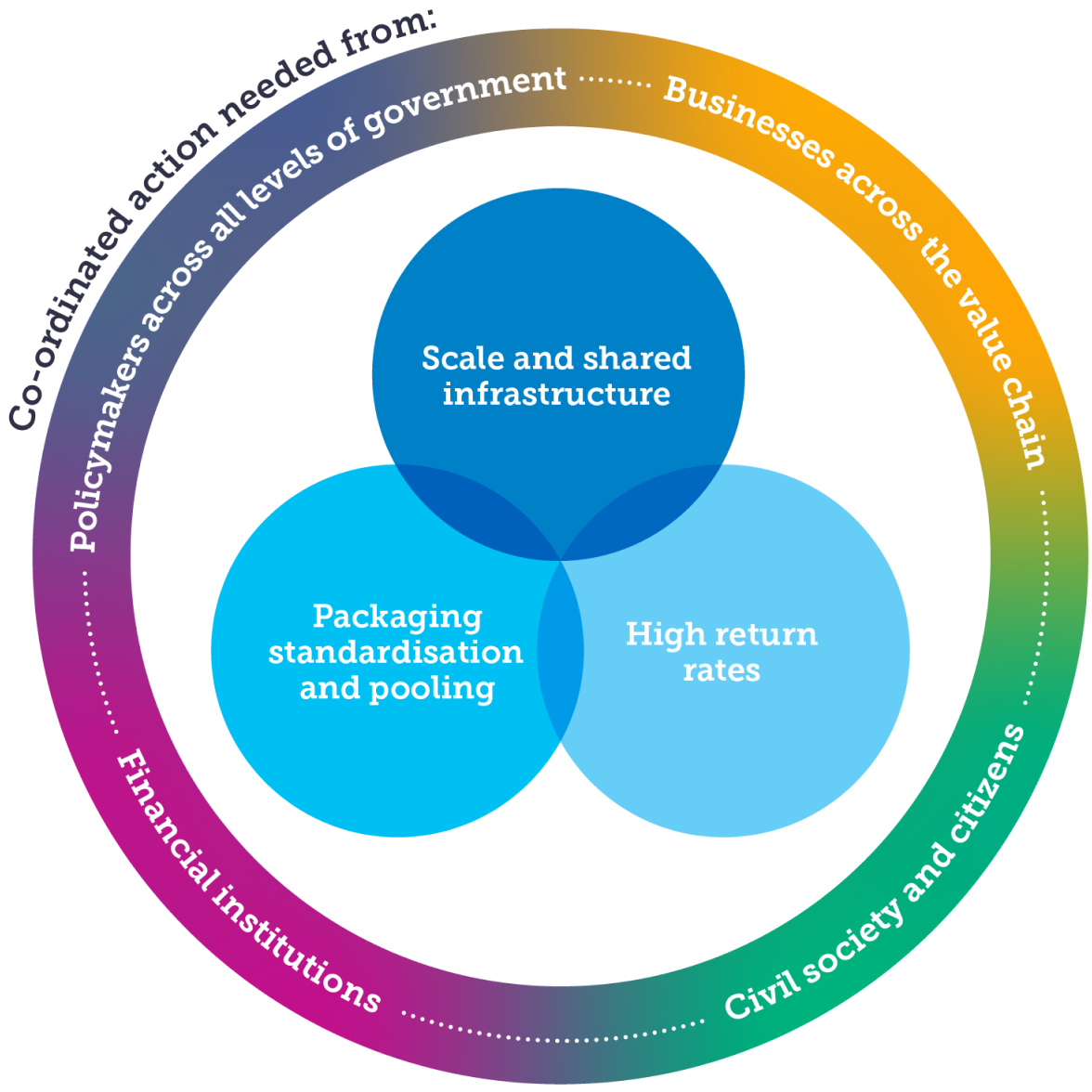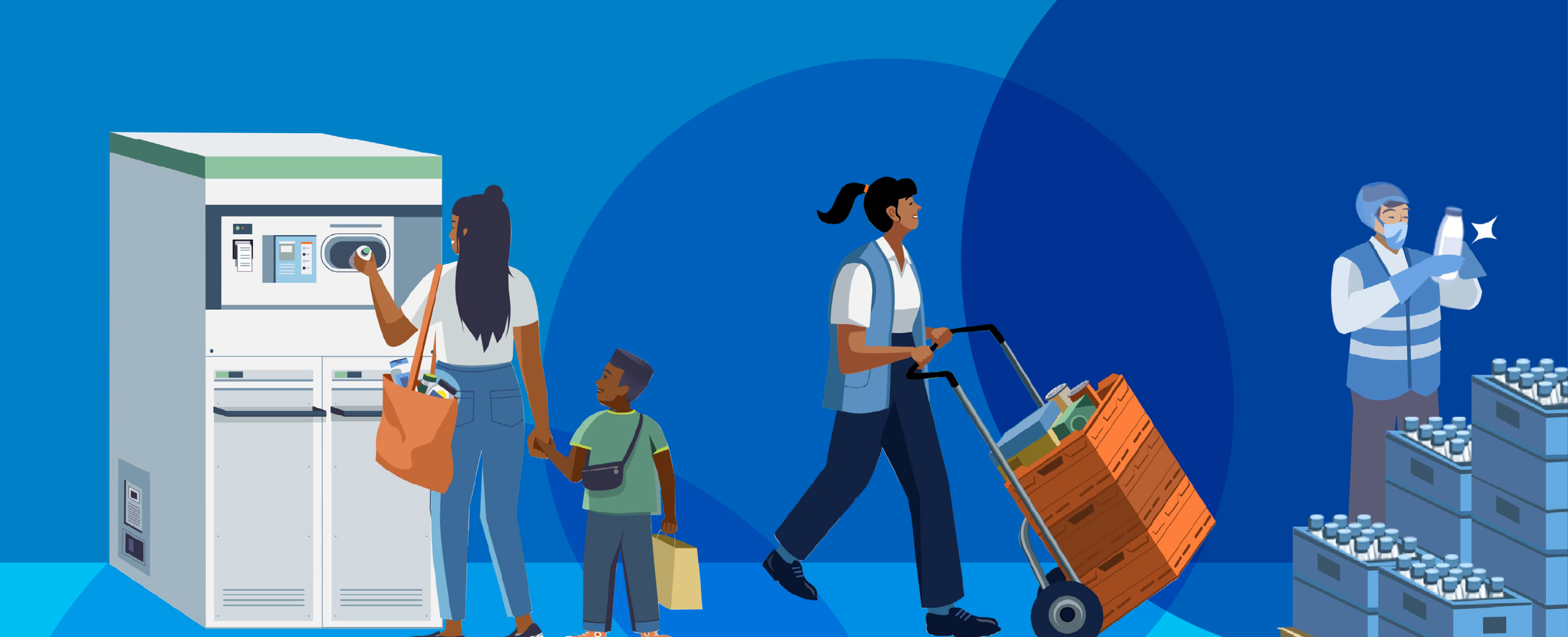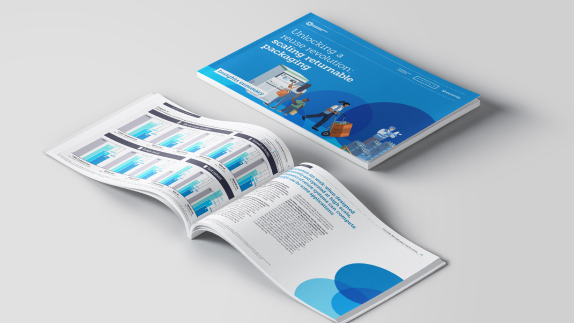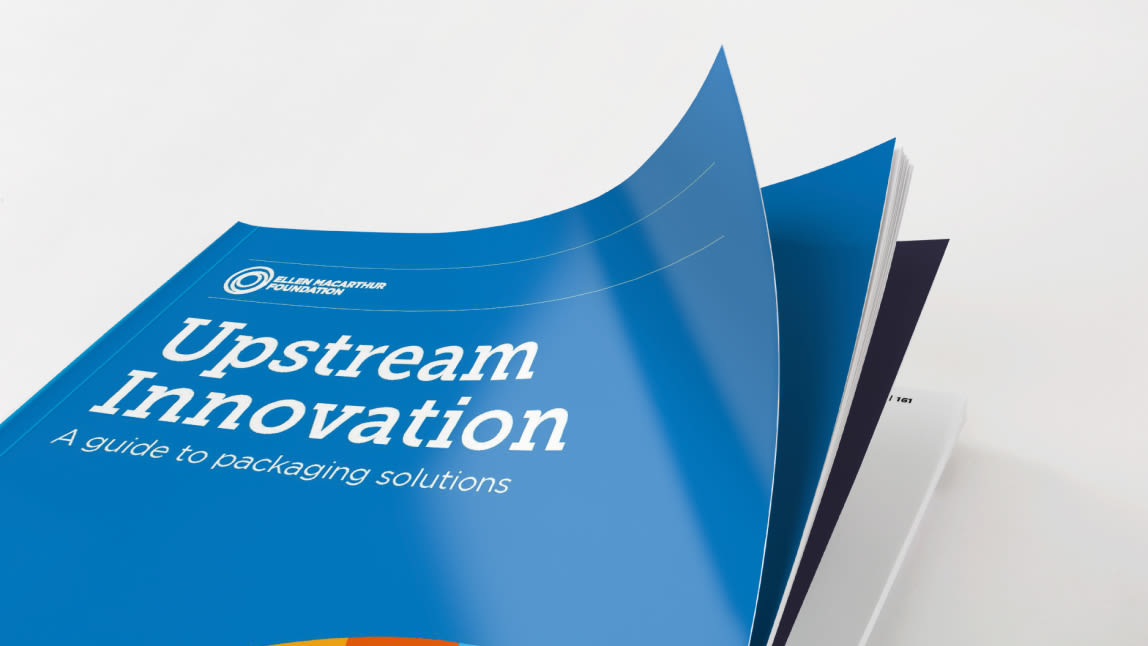A reuse revolution is critical to tackle the plastic crisis: this study shows the route to scaling returnable packaging
Despite concerted and ambitious industry initiatives, such as the Global Commitment, the world is off track to tackle plastic waste and pollution. While elimination of packaging is essential, where possible, and recycling efforts will still be needed, to achieve a future where plastic never becomes waste, reusereuseThe repeated use of a product or component for its intended purpose without significant modification. systems need to be significantly and urgently scaled.
Over the past five years, there has been some momentum across the industry – the existing pilots are a step in the right direction. We need to see action go further, faster to meet the scale of the plastic waste and pollution challenge and realise the benefits of a reuse revolution.
Developed in partnership with Systemiq and Eunomia, this study focuses on business-to-customer returnable reusable packaging systems. Customers buy packaged products, return the packaging when finished, and then the packaging is cleaned and refilled before being sold again.
The study has been developed with more than 60 leading organisations including the European Investment Bank, national governments, reuse experts and major brands and retailers, such as The Coca-Cola Company, Danone, PepsiCo, and Unilever.
To drive global change, the Foundation is calling on leaders across the private, public and finance sectors, to take a fresh approach to expand a reuse revolution through shared infrastructure, packaging standardisation, and to work collaboratively to reach high return rates.
About the modelling
This study is underpinned by advanced modelling that quantifies the performance of return models under certain conditions. The System Change scenario depicts a long-term vision for optimised return models.
For some applications for which return packaging is a proven solution (e.g. certain types of beverages), this scenario is roughly aligned with the most advanced existing systems. For less mature applications, such as personal care or food products, there is a need for further research and development for this long-term vision to be within reach. The scenarios keep all variables constant across applications to aid comparison, but it’s likely that any system would have a blend of bespoke and pooled packaging, and high return rates may be easier or harder to reach depending on the application. The outcomes presented are based on French data and geography.

Return systems must be optimised for three key drivers
To make the economics work for returnable packaging and maximise the environmental opportunity, collective action is vital. This study has identified three key performance drivers:
Scale and shared infrastructure: sharingsharingThe use of a product by multiple users. It is a practice that retains the highest value of a product by extending its use period. infrastructure, such as collection, sorting, cleaning and transportation, provides economies of scale. Perhaps the most important example of shared infrastructure is collection, not only to share costs, but to provide customers with a consistent and streamlined experience. Having to separate packaging and interact with multiple collection streams could be a barrier for customers.
Packaging standardisation and pooling: standardising packaging for certain product types can significantly increase the efficiency of sorting, cleaning and storing, while pooling packaging can dramatically decrease transport distances and the associated emissions and costs. Labels and closures can be used to differentiate brands and product lines.
High return rates: by incentivising return and providing a frictionless customer experience, companies can increase return rates. Getting the packaging back from customers is key for these types of business models to work. All actors must work together to achieve high return rates.

Scaling returnable packaging is possible through collective action by businesses, policymakers, and financial institutions
To realise this vision, we urge all stakeholders to come together to take three key actions:
Adopt a fundamentally new approach
Kickstart the transition by deploying collaborative multi-brand and multi-retailer systems
Follow through by scaling up these systems across a greater range of products, sectors, and geographies
Downloads
The Unlocking a reuse revolution: scaling returnable packaging study is available in: English, Español and Português.
The Modelling technical appendix and Design pathways appendix are also available for download below.
To quote the study, please use the following reference: Ellen MacArthur Foundation, Unlocking a reuse revolution: scaling returnable packaging (2023).
It’s time for a reuse revolution. Embracing this gives us the opportunity to tackle plastic pollution, ease pressure on our natural resources, and make strides towards net zero. Scaling reuse will be a major transition and won’t happen overnight. This analytical study gives us greater insight into the key drivers that affect the environmental and economic performance of return systems. Yet, it doesn’t have all the answers. We now need to see more research and groundwork to make return models at scale a reality. No single organisation can drive the necessary change by itself; it will require a collaborative effort from businesses, policymakers and financial institutions. Together they can kick start the reuse revolution and get the world on track to tackling the plastic crisis.
- Sander Defruyt, Plastics Initiative Lead at the Ellen MacArthur Foundation
This valuable study issues a blueprint for achieving the crucial step-change from recycling to reuse in a global economy. Shifting towards reuse systems can increase circularity at scale, whilst at the same time creating new business options and social benefits.
- Ambroise Fayolle, Vice President at the European Investment Bank
We’re pleased to be working with the Ellen MacArthur Foundation and other industry partners to explore the economic, environmental, and experiential impacts of reuse models versus single-use.
Getting these models working economically at scale, however, will take time and will require significant collaboration between retailers, manufacturers, policymakers, and civil society. Fragmented efforts will not be enough to drive the necessary systems change.
- Jolanda de Rooij, Senior Sustainability Manager Circular Economy at Unilever









